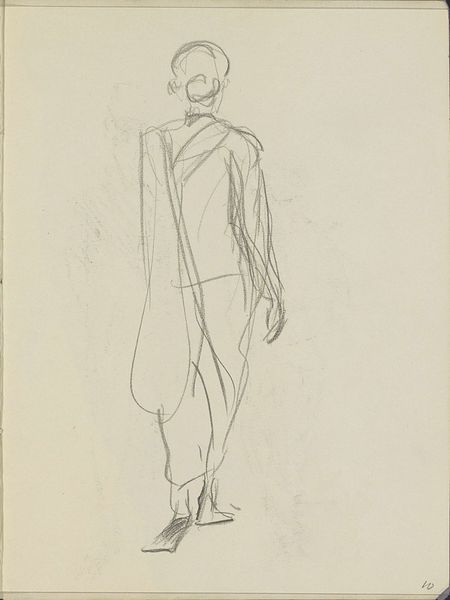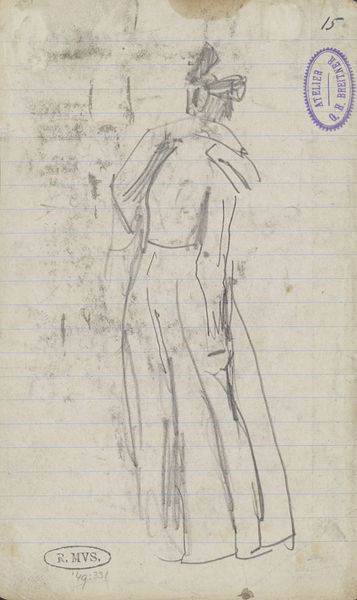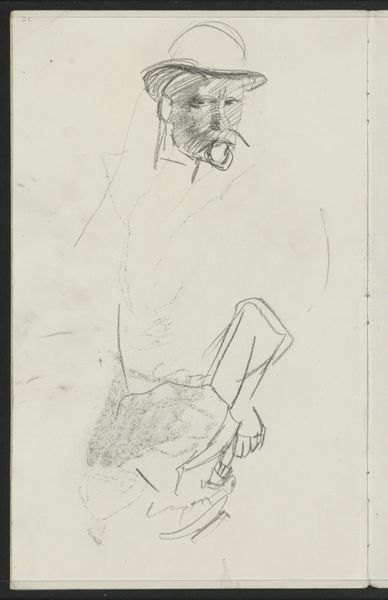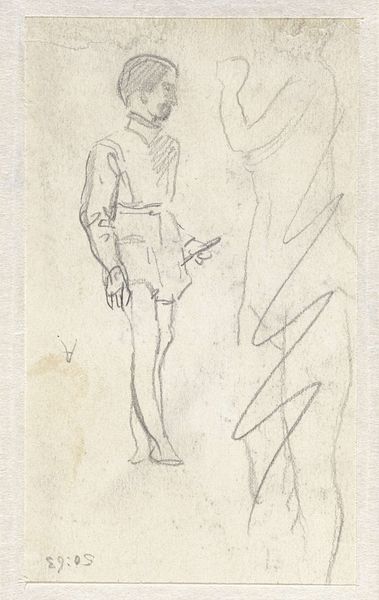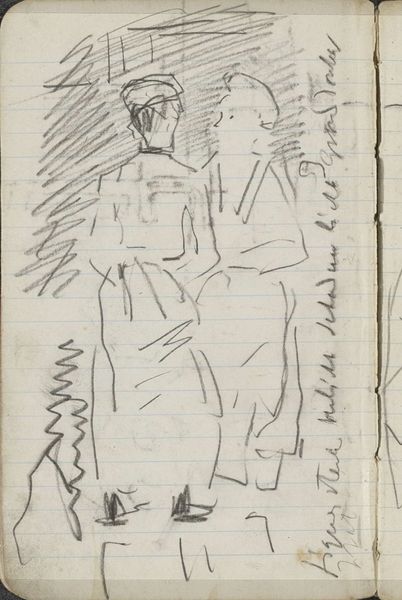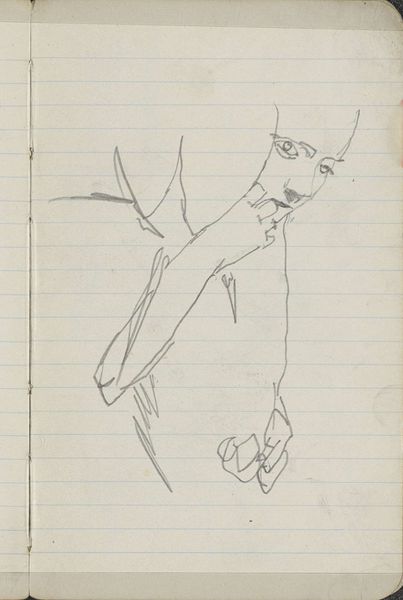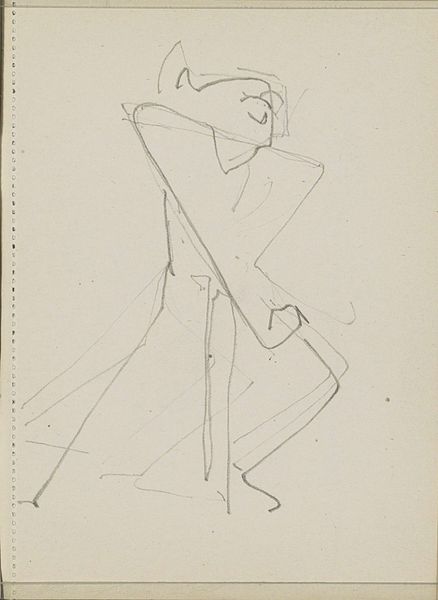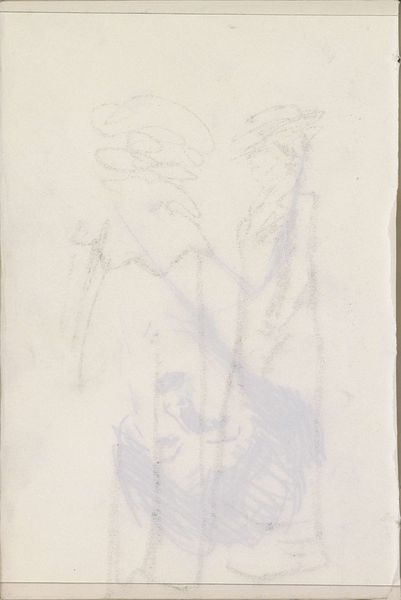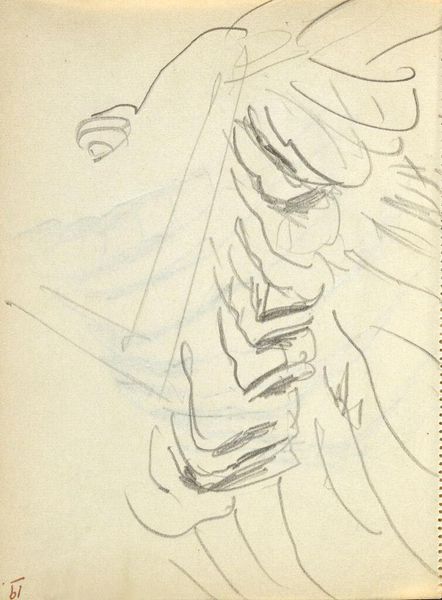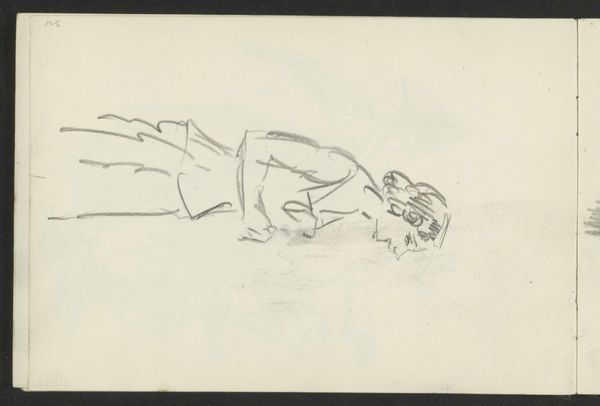
drawing, paper, pencil
#
portrait
#
drawing
#
imaginative character sketch
#
light pencil work
#
pencil sketch
#
figuration
#
paper
#
personal sketchbook
#
idea generation sketch
#
sketchwork
#
character sketch
#
pencil
#
line
#
sketchbook drawing
#
japonisme
#
storyboard and sketchbook work
#
initial sketch
Copyright: Public Domain: Artvee
Editor: This is Charles Demuth’s "Japanese Lady," a pencil drawing from around 1905-1910. I’m struck by the delicacy of the lines and how subtly he suggests the form and the details of her kimono. What do you see in this piece? Curator: I see a powerful commentary on cultural exchange and appropriation during the late 19th and early 20th centuries, specifically within the context of Japonisme. Demuth, a white American artist, is engaging with Japanese aesthetics, but it begs the question: whose gaze is being prioritized here, and to what end? What does it mean to represent a culture other than your own? Is he celebrating or exoticizing? Editor: That’s a good point. I hadn't really considered the perspective of cultural appropriation. I was mainly appreciating the surface aesthetics. Curator: Consider also the power dynamics at play. How does this "Japanese Lady" become a symbol within Western art, divorced from her own agency and context? What do the lack of strong individual features and soft lines say? Are we seeing a person, or an ideal? Is it flattening of cultural identity, presenting it for easy consumption by a Western audience? Editor: It’s interesting how a seemingly simple sketch can raise so many questions. It definitely challenges me to think more critically about the artist's intentions and the broader implications of cultural representation. Curator: Exactly. It pushes us to acknowledge how art can perpetuate, or perhaps even challenge, historical imbalances and colonial perspectives. It is only through recognizing such works’ troubled and complex positions that we begin decolonizing art historical spaces. Editor: This makes me realize how important it is to look beyond just the surface appeal and to really consider the social and historical context. Curator: Indeed. By interrogating these visual choices, we can unveil the layered meanings embedded within the seemingly simple image. Thank you, this was very informative to me.
Comments
No comments
Be the first to comment and join the conversation on the ultimate creative platform.
